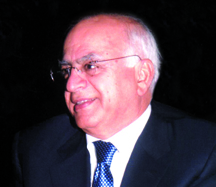Abdullah Al-Bustani & Columbus
in my last article, i stated that columbus was spanish when, in fact, he was italian by birth and later pledged allegiance to spain.
christopher columbus, credited with the discovery of the americas half a millennium ago, embarked on his historic voyage from spain, sailing westward toward asia.
born in 1451 in genoa, italy, columbus began his seafaring career at the age of 14, working aboard merchant ships.
by 1473, he was serving genoese merchants and gained experience navigating ships involved in extensive maritime commerce. he furthered his education in portugal, where he learned to read and studied mathematics, astronomy, navigation, and maps and eventually settled in lisbon, a hub of european maritime activity at the time.
columbus’s ambition to find a westward route to the indies intensified due to various factors, including insights gleaned from geographical maps produced by his brother, accounts of portuguese voyages, and discoveries of artifacts near atlantic islands.
relying on the latest scientific knowledge, including the work of italian paolo toscanelli (1397-1492) and german martin behaim (1459-1507), who specialized in mathematics and astronomy, columbus conceived his plan to reach east asia by sailing west.
in 1484, columbus proposed his expedition to king john ii of portugal, who declined to sponsor it. turning to the catholic monarchs of spain, queen isabella and king ferdinand, columbus faced years of setbacks before securing their support on april 17, 1492.
their backing was contingent upon columbus’s commitment to commercial objectives, namely discovering a shorter and less costly sea route to access the lucrative markets of china and japan.
setting sail from spain on august 3, 1492, with three ships, columbus traversed the atlantic ocean and reached the caribbean islands two months later.
his second voyage in 1498 led to the discovery of the north american continent. subsequently, columbus faced imprisonment on allegations of mistreating indigenous peoples before embarking on his fi nal voyage in 1502, during which he discovered numerous new islands.
although columbus died under the misconception that he had reached the indies, it was the italian explorer amerigo vespucci who later realized that the vast lands discovered constituted a new continent, not asia. consequently, the “new world” was named “america” in honor of vespucci on martin waldseemüller’s 1507 map.
columbus returned to spain from his fi nal voyage in 1504, aged 53 and in failing health. he spent his remaining years in melancholy and mental distress, passing away in 1506 in valladolid, spain, and was laid to rest in the carthusian monastery of santa maría de las cuevas in seville.
the story recounted in “people are races” by lebanese writer salam alrassi regarding an exhibition in chicago in 1893 honoring columbus’s memory lacks verifi able evidence, but it remains a poignant tale worth sharing.
the anecdote describes how, on the occasion of the 400th anniversary of america’s discovery, poets were commissioned to compose verses in various languages to adorn the base of columbus’s statue. among these verses were purportedly lines by lebanese poet abdullah al-bustani, expressing a sentiment of honoring columbus’s endurance and sacrifice.
while the authenticity of this narrative cannot be confirmed through available research, its poetic resonance endures.
it serves as a reminder of the power of storytelling and the enduring allure of crafted narratives, even when historical accuracy may be elusive. as the saying goes, “the most beautiful poetry is often the most fictitious,” highlighting the ability of art to transcend factual constraints and evoke profound emotions.






